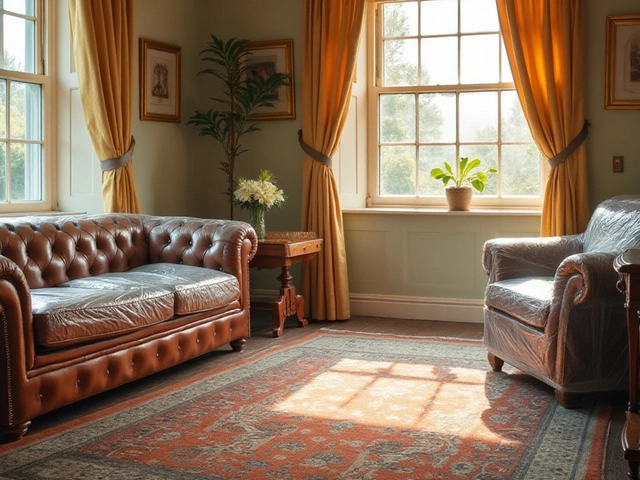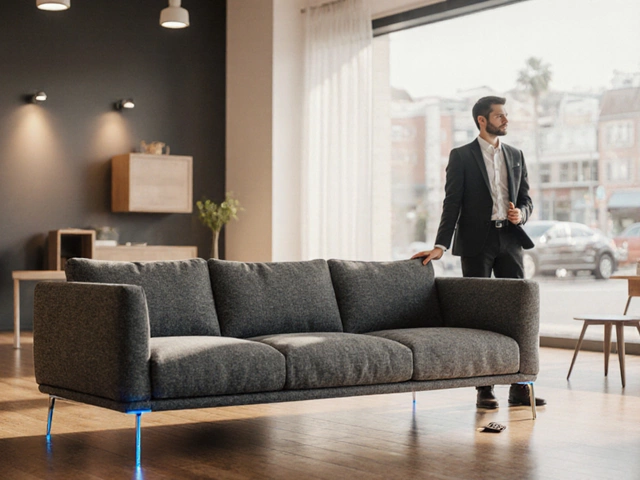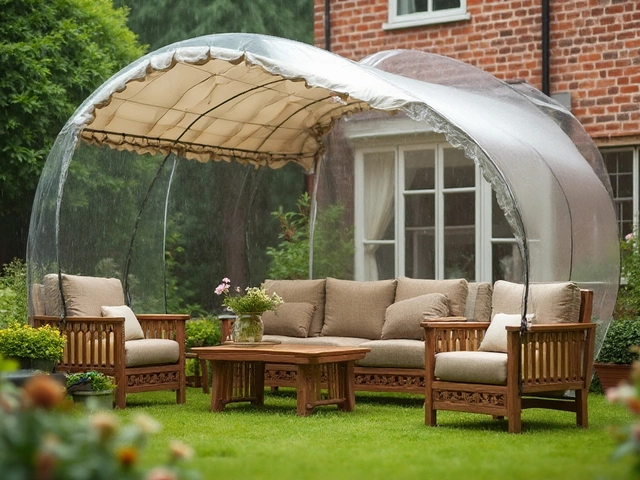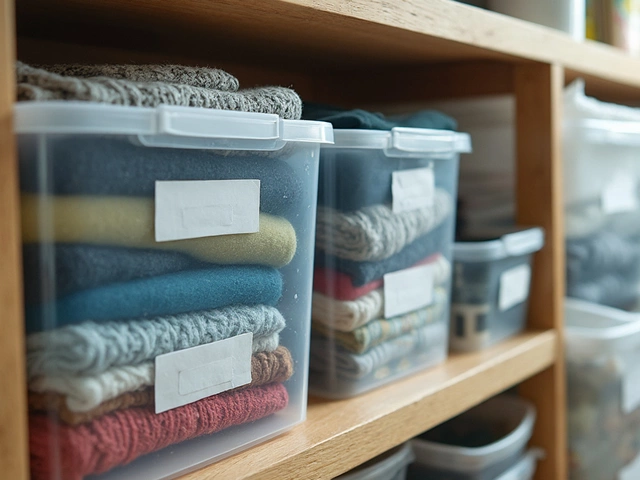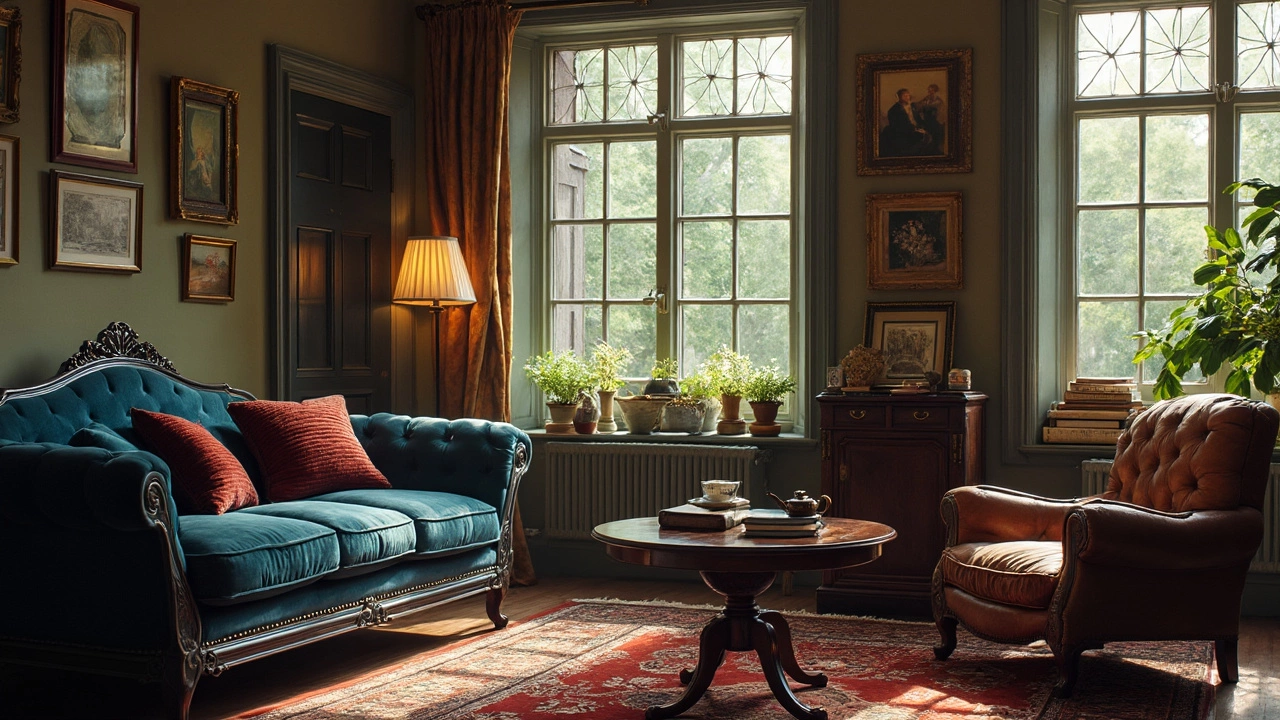 18
Mar,2025
18
Mar,2025
Ever wandered through a furniture store and found yourself drawn to a stunning sofa with a price tag that made you wince? You're not alone. But it begs the question—are these luxurious couches really worth the hefty cost?
On one hand, expensive sofas often boast high-quality materials and expert craftsmanship, promising durability and style that can outshine their cheaper counterparts. But does higher price always equate to better quality? Not necessarily. While you might be paying for premium fabric or a trendy designer name, sometimes the cost reflects nothing more than brand prestige.
Before emptying your wallet, think about your lifestyle. Got kids or pets? A pricey white linen sofa might not be the best fit. Instead, consider the balance between function and luxury—understand what you're actually investing in. Knowing the ins and outs can help you decide if a high-end sofa is a smart addition to your home, or simply an extravagant splurge.
- The Price Tag: What You’re Really Paying For
- Durability and Material: The Truth About Longevity
- Style vs. Practicality: What Suits Your Life?
- Long-term Investment: Is It Financially Sound?
The Price Tag: What You’re Really Paying For
So, why do some sofa sets cost as much as a small car? Often, it's about more than just the couch itself. When you're shelling out big bucks, you’re typically paying for a mix of factors: material quality, brand reputation, craftsmanship, and sometimes, a bit of hype.
Material Quality
Expensive sofas often feature better materials, like top-grain leather, kiln-dried hardwood frames, or high-density foam cushions. These ingredients promise longevity. A well-made sofa can last over a decade, while a cheaper one might start sagging within a few years. That said, the materials alone won't tell you everything. It's crucial to know whether they're put together properly.
Brand & Craftsmanship
Then there's the brand. Luxury furniture brands often carry a legacy of quality—think names like Mitchell Gold + Bob Williams or Stickley. As Anna Ross, a furniture designer, puts it,
“You're paying for generations of expertise and consistent quality.”This reputation can add a premium to the price tag, and while it often speaks to the piece’s durability, sometimes you're just paying for that little tag on the side.
Cost-Benefit Balance
Before you swipe that credit card, ask yourself what you're truly looking for. Do you prioritize style or comfort? Many expensive sofas marry these aspects with flair. However, if you're not planning to keep it for decades, the steep price might not be worth it. Think of what matters most in your situation—are you ready for a long-term relationship, or just a temporary commitment?
| Factor | Importance |
|---|---|
| Material Quality | High |
| Craftsmanship | High |
| Brand Name | Varies |
| Design | Subjective |
| Longevity | High |
Understanding these elements can guide you through a sea of options in the complex world of buying expensive sofas. Whatever you decide, make sure you're not just buying a piece of furniture, but an asset to your home that aligns with your lifestyle and budget.
Durability and Material: The Truth About Longevity
When it comes to spending big bucks on expensive sofas, durability is often one of the biggest selling points. But what makes one sofa last decades while another barely survives a couple of years? It's all in the materials and build quality.
Frame Fundamentals
The frame of your sofa is its backbone, quite literally. High-end sofas often feature frames made from solid wood like oak or maple, known for their strength and durability. Cheaper versions might use particleboard or plastic-like materials that simply don't last. No one wants to hear a creek during movie night, right?
"Invest in kiln-dried hardwood frames for long-lasting strength," advises Jane Smith, a furniture expert at Home Living Magazine.
Cushion Calculations
Next up are the cushions. Down-filled cushions might sound luxurious, but they require high maintenance to keep their shape. High-density foam, on the other hand, offers durability without deflating quickly, providing comfort season after season.
Fabric Facts
Fabric can make or break a sofa. Leather and performance fabrics are popular choices for those who wish to ensure their investment protects against daily wear and tear. While leather is classic and gets better with age, modern performance fabrics offer stain resistance and durability—especially if kids or pets are part of the picture.
Longevity On A Spreadsheet?
Some studies suggest that investing in a quality sofa can be more economical over time. Consider this:
| Sofa Type | Average Lifespan | Annualized Cost |
|---|---|---|
| High-End Sofa | 15 years | $80/year |
| Low-Cost Sofa | 5 years | $120/year |
It's like buying shoes—get a good pair, and they’ll walk miles longer than a cheap one.
Ultimately, understanding the nitty-gritty of sofa materials and build can help you gauge if that pricey settee is truly worth the investment. Always remember, a little research can go a long way in securing a sofa that stays comfy and chic, long after the receipt has faded.
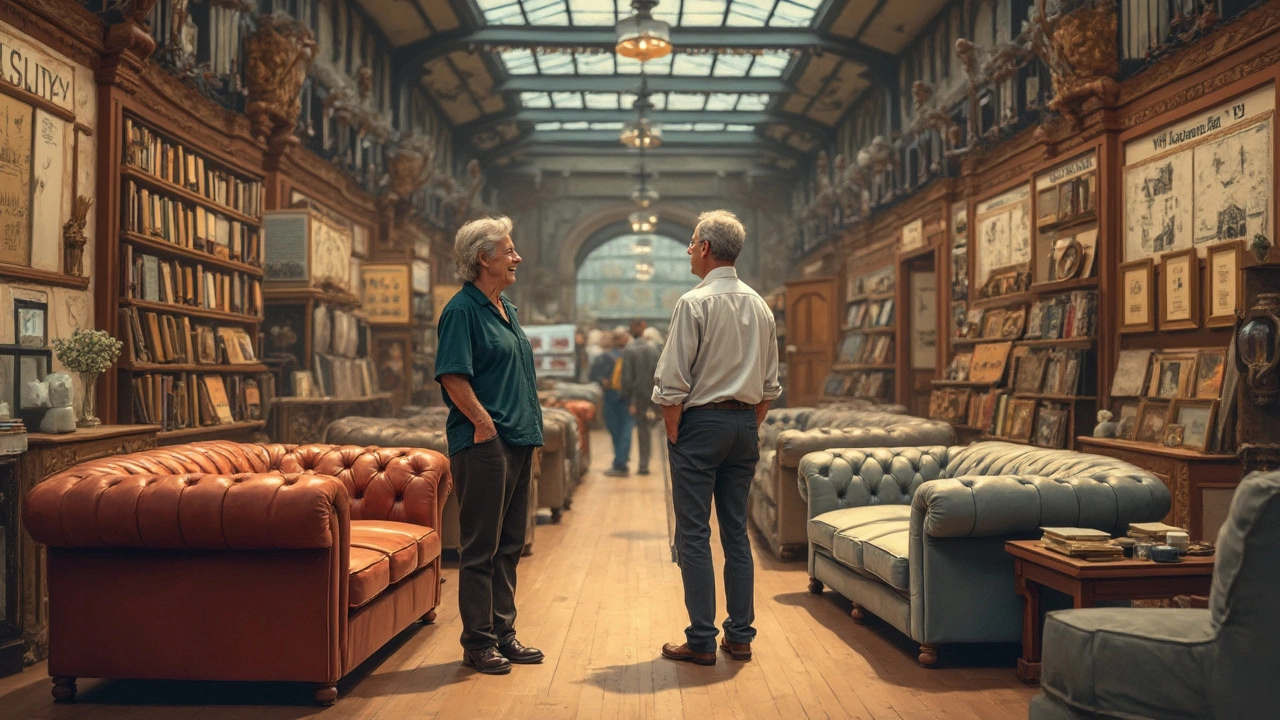
Style vs. Practicality: What Suits Your Life?
When it comes to picking the right sofa, the debate between style and practicality can be a real head-scratcher. What looks great in a showroom might not be the best choice for your everyday life. Here's how to weigh your options.
Understanding Your Lifestyle
If you've got a bustling home filled with kids or pets, a high-maintenance, light-colored sofa might spell trouble. Darker fabrics or those with patterns can disguise spills and wear much better. On the flipside, if your living room is more of a sanctuary or a showcase than a playroom, then maybe leaning into elegance is okay.
Room Size and Use
Consider your space. A large, plush sofa can dominate a small room, making it look cramped. Meanwhile, a sleek, modern piece could get lost in a larger area. Think about how you use your space. Do you entertain a lot? Is Netflix and chill on the agenda more than you care to admit? Comfortable, durable seating might take precedence over that magazine-worthy piece.
The Style Element
Everyone wants their home to look good, but what does that mean for your sofa choice? Expensive sofas often bring designer flair and trendy looks, but trends come and go. A more neutral, classic style might be less exciting but offer better longevity. And if you do go trendy, consider accessorizing with pillows or throws that are easier (and cheaper) to swap out when tastes change.
| Consideration | Practical Approach |
|---|---|
| Frequent Spills | Opt for stain-resistant fabric |
| Room Size | Measure before you shop |
| Pet Hair | Choose a fabric that’s easy to clean |
Choosing between style and practicality isn’t just about looks or money, it’s about finding what best suits your life. Everyone’s home is different, and your sofa should fit how you really live, not just how you imagine you might.
Long-term Investment: Is It Financially Sound?
When it comes to investing in expensive sofas, many folks wonder if they’re actually getting their money’s worth. The thought of shelling out thousands might make your wallet sweat, but there can be financial benefits in the long haul.
First off, let's chat about depreciation. Unlike flashy gadgets that quickly lose value, a well-made sofa tends to maintain its worth over time. If you choose pieces crafted from durable materials and iconic designs, you could resell them years later for a good chunk of change—or even more than what you paid if they become 'vintage'.
Here’s a fun fact: According to a report by the American Home Furnishings Alliance, high-end furniture retains about 70% of its value even after a decade, especially if it's well taken care of. So, while the initial investment is steep, the depreciation isn’t as harsh compared to cheaper, mass-produced options.
"Quality is remembered long after the price is forgotten," says Giorgio Armani, emphasizing the importance of investing in durable goods that offer longevity.
Consider longevity—a pricier sofa often translates to fewer replacements over the years, saving you money and hassle. Think about it: instead of buying two or three lower-quality sofas over a decade, one solid piece could serve you just fine.
Assessing Personal Priorities
Is splurging on a sofa the best move for everyone? Not necessarily. It's crucial to align your purchase with your personal and financial priorities. If home aesthetics rank high and you value a mix of comfort and prestige, go for it! But if couch-jumping kids or shedding pets are in the picture, maybe hue and material choices should take center stage.
To boil it down, spending big on a sofa can be a solid financial decision if you opt for timeless designs and durable materials. Just remember to factor in your lifestyle and your future plans. A sofa isn't just a place to sit—it's an investment in comfort and happiness at home.
